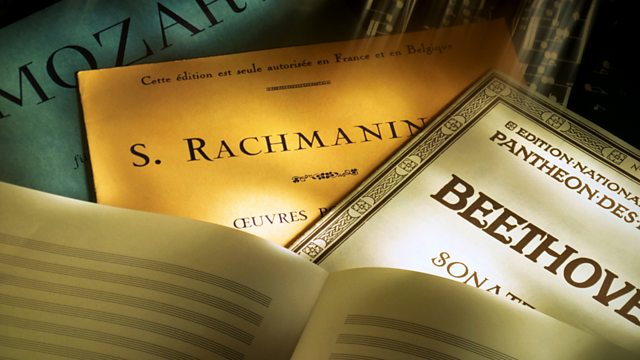
Berlioz' Symphonie Fantastique
The youthful brilliance of Hector Berlioz, as revealed in the manuscript of his Symphonie Fantastique, is explored by Frances Fyfield, Nigel Simeone and Professor Peter Bloom.
Written when he was still little more than an aspiring composer, driven by the image of a woman with whom he had fallen passionately in love from afar, and breaking new ground in the drama of concert performance, Berlioz's Symphonie Fantastique is one of the most important manuscripts held at the Bibliotheque Nationale de France.
With the help of the conductor Nigel Simeone, the Berlioz scholar Professor Peter Bloom and the music curator Cecile Reynaud, Frances Fyfield discovers the youthful energy of the handwritten score that Berlioz kept with him for fourteen years before delivering it to the publishers. In that time there were rewrites, extra parts written in for extraordinary circumstances and all the usual tweaks and refinements you'd expect of a composer working towards his imaginative ambitions. But the score also comes complete with the composer's dedications to Harriet Smithson, the Anglo-Irish actress whose image became the famous 'idee fixe' of the symphony. This simple melody returns again and again throughout the five movements.
There are also printed programme notes created for the first audiences, notes describing the 'story' of a young man taking opium and having a sequence of dreams and imaginings about his love, his jealousy, his death at the scaffold and the witches' sabbath thereafter.
As well as evidence of extraordinary musical imagination the manuscript score also displays bizarre gothic doodles alongside the fourth movement, complete with ravens, chains and helmets. This, the famous March to the Scafford was actually lifted from one of the composer's earlier operas that doesn't survive. To make it work in the symphony, Berlioz felt it needed the inclusion of the 'idee fixe', and there, on the last page, in the dying breath of the hero as he awaits the guillotine's blade, it appears wistfully played by the clarinet.
And just to cap it all there are the many exotic instruments Berlioz called upon, including the magnificent brass ophycleide.
It's all in the last of this series of Tales from the Stave.
Producer Tom Alban
Presenter FRANCES FYFIELD.
Last on
More episodes
Previous
Next
You are at the last episode
Broadcasts
- Tue 8 Nov 2011 11:3091热爆 Radio 4
- Sat 12 Nov 2011 15:3091热爆 Radio 4
Seven disastrous classical music premieres that went on to be hits
First night (mares) featuring drunk conductors, rioting audiences and hidden trapdoors.
